Interview The Kanto Team
Images Metrobank Foundation
Congratulations to the Metrobank MADE team for reaching the momentous 40-year milestone marked by the Sibol exhibition at The M. How does the show bring Metrobank Art & Design Excellence (MADE) ‘s 40-year journey to life for its audience?
Sandra Palomar, artist, educator, and exhibition curator, Sibol: Thank you, Kanto! MADE has had 38 competitions over the past 40 years. In a way, it’s a long journey but also a short one. For those unaware of what MADE is — especially younger audiences or non-artists who may not know this competition — it’s crucial to engage them without overwhelming them with too much history. The challenge is to bring these 40 years of winning artworks to life.
One way we do this is by incorporating the perspective of the youth. As a curatorial team from Foundation University Dumaguete, we worked with students to engage with these works. With guidance from our instructors, they reacted and responded to the pieces. Von, for example, created an augmented reality component for the exhibit. Maybe Bon can share more about it.
Joven Uba, Student Assistant, AR/VR Development: This is my first time working in this field. I created an animation and transferred it into an app to bring augmented reality into the exhibit. I used Spark AR Studio and Artivive to make the augmented reality work.
Palomar: Yes, Von worked on a piece by Paolo Marin titled You Are What You Eat (2018). When people see the painting, they can use a smartphone or tablet and, by pressing the camera, view Von’s animation. This augmented reality element helps bring these artworks — many of which have been in storage or are new to the public — back to life.
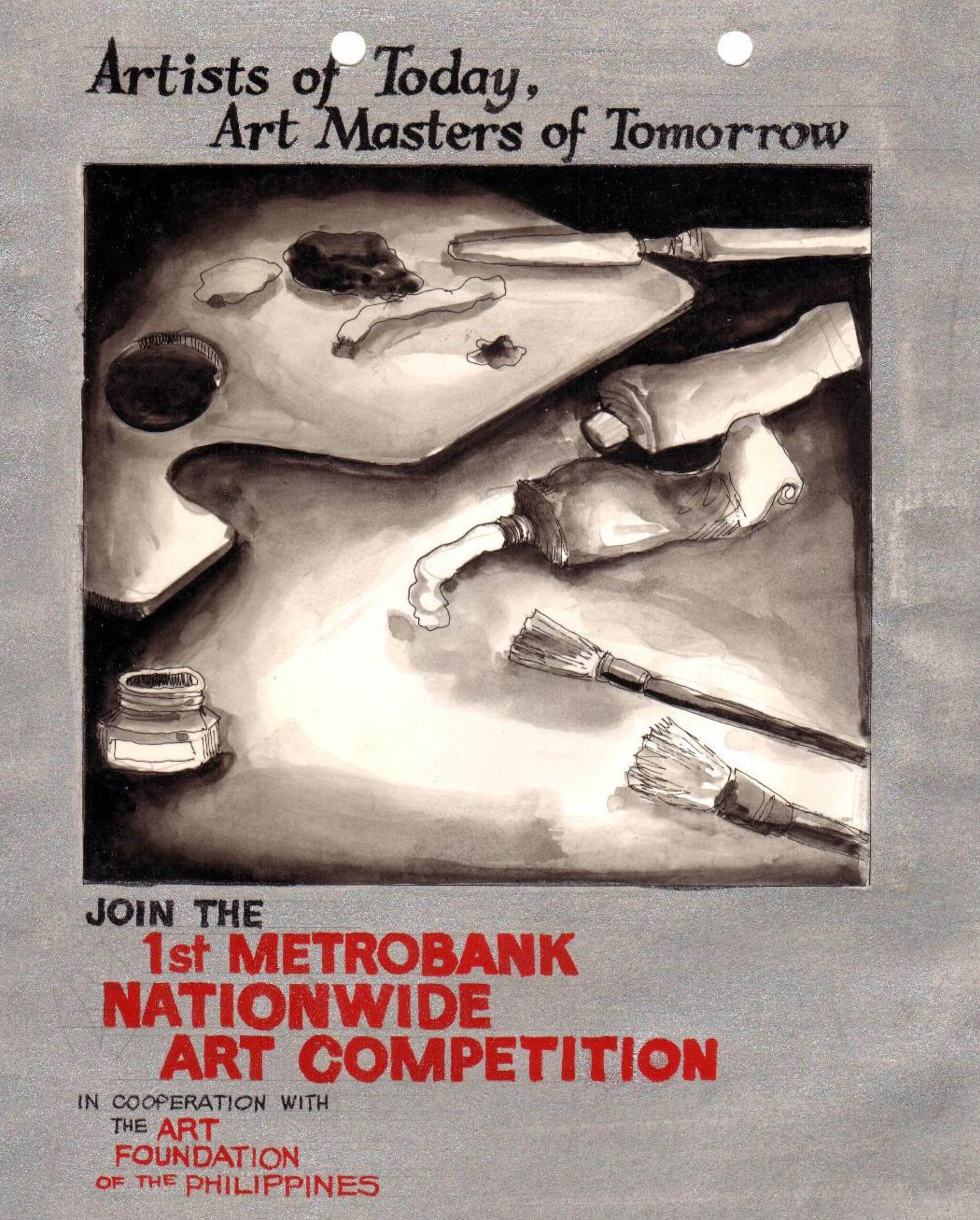

What guided your choices in selecting the artworks? Were there certain elements you absolutely couldn’t compromise on, either for yourself as curator or for Metrobank MADE?
Palomar: Initially, we could have curated this straightforwardly with a single person conceptualizing it, but I thought it would be more interesting for the entire team to go through the process, including voting on the artworks.
Our students and instructors had never seen the originals, and even I hadn’t seen some of them. We had only digital files to base our decisions on, and each of us chose our top 40 artworks. From there, we submitted our choices to the Metrobank Foundation and checked which works were available for loan or exhibit. We started with 55 but had to reduce the number due to some works being unavailable.
Now, regarding what we couldn’t compromise on: we had to include artists whose careers continued after they were recognized. For instance, Roberto Feleo’s work, which won in
1984, is part of the exhibit. In another section, called A Metathesis of Styles, we feature more recent works from artists like Feleo, including a piece loaned from the Metropolitan Museum of Manila. The section showcases artists who won between 1984 and after 2000, including two recent awardees from Iloilo who won in 2016 and 2017.
It was essential to highlight that an artist’s work doesn’t stop after winning. The exhibit shows how these artists have evolved, exploring new mediums and shifting their language over time. That guided our choices: to stick to a narrative that reflects the continued growth of these artists.
In what ways does Sibol break new ground compared to previous Metrobank MADE exhibitions, both in theme and execution?
Palomar: Thematic exhibitions are a more recent development. It’s only since last year that MADE’s awarded entries have been shown in a museum setting with specific themes.
Previously, the works were displayed as individual awardees, but last year, I had the chance to work on adding a narrative to the exhibition.
Sibol, as the title suggests, summarizes MADE’s work over four decades: nourishing artists. In terms of execution, we’ve introduced works not part of the main collection to foster discourse on where art is heading. This opens new conversations and sets this exhibit apart, making it groundbreaking for the foundation.
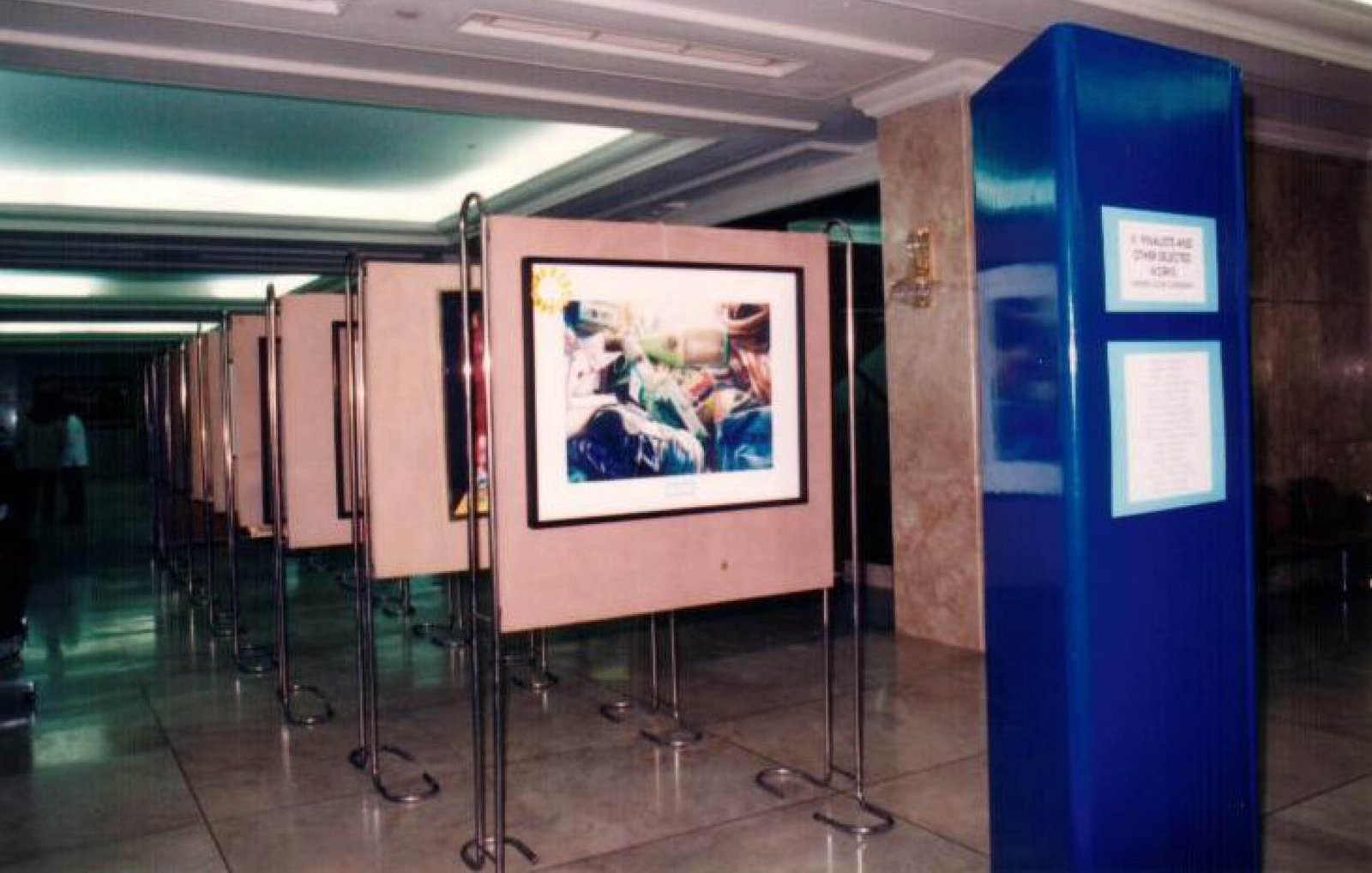

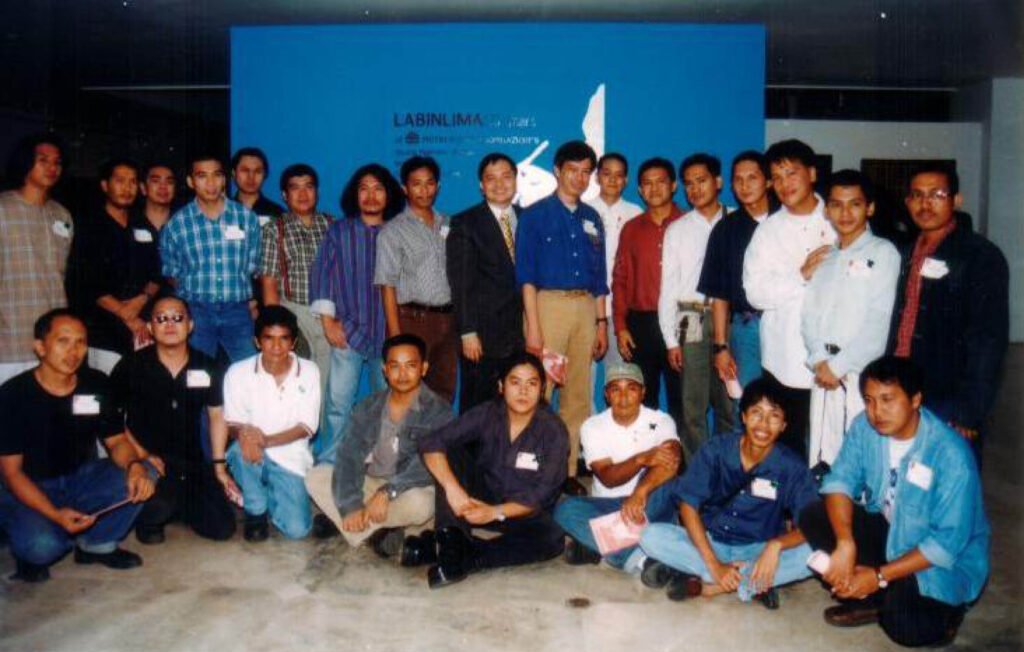

What was the toughest part of curating such a diverse collection, and how did you push through that challenge?
Jay Cris Sisneros, Academic Advisor: For me, the toughest part was incorporating new technologies into the sensorial sections of the exhibit, specifically virtual reality and augmented reality. I’m relatively new to VR and AR, but I’m grateful we managed to pull it off in time.
Palomar: I agree. One challenge for curators is making sure the artists understand that we are representing their work accurately. Thankfully, the artists were open to experimenting with how their pieces were presented. Another challenge was that much of the work was done online — about 80% of it, which makes it difficult and expensive to check the artworks in person. But the Metrobank team provided us with thorough background information, and we had productive exchanges of ideas.
Logistics were also a challenge. This kind of exhibit requires a lot of coordination, but it’s worth it. It’s the kind of museum-quality show that our audience deserves, especially with the Metropolitan Museum as a partner.
Are there any pieces in Sibol that you feel particularly connected to? What makes them stand out for you?
Noel Cabangbang, Academic Advisor: My favorite is by Jowee Aguinaldo. As an art teacher, I look for pieces that are powerful, and Aguinaldo’s work made me want to change my curriculum. It made me think, this is the kind of art I want my students to create.
Joven Uba, Student Assistant, AR/VR Development: Out of all 200 artworks, one that really caught my attention was Paolo Marin’s You Are What You Eat. It’s the only piece in a graphic art style, which resonates with my generation’s affinity for digital media and social media. The piece is colorful yet subtle and tackles how social media affects us in our daily lives.
Palomar: Another piece I feel strongly about is Roberto Feleo’s entry, which was one of the top three winners in 1984. It set the tone for the whole collection. Feleo didn’t use traditional materials like oil or acrylic; instead, he worked with wood and hardware materials, reflecting the resources available to artists. His piece also references the Hiroshima bombing of August 6, showing that he can engage with global history, not just local narratives.
It’s worth noting that Feleo taught at the Philippine High School for the Arts, and many of his students have also been recognized in MADE. This connection between art and education is crucial to showcasing our cultural wealth.


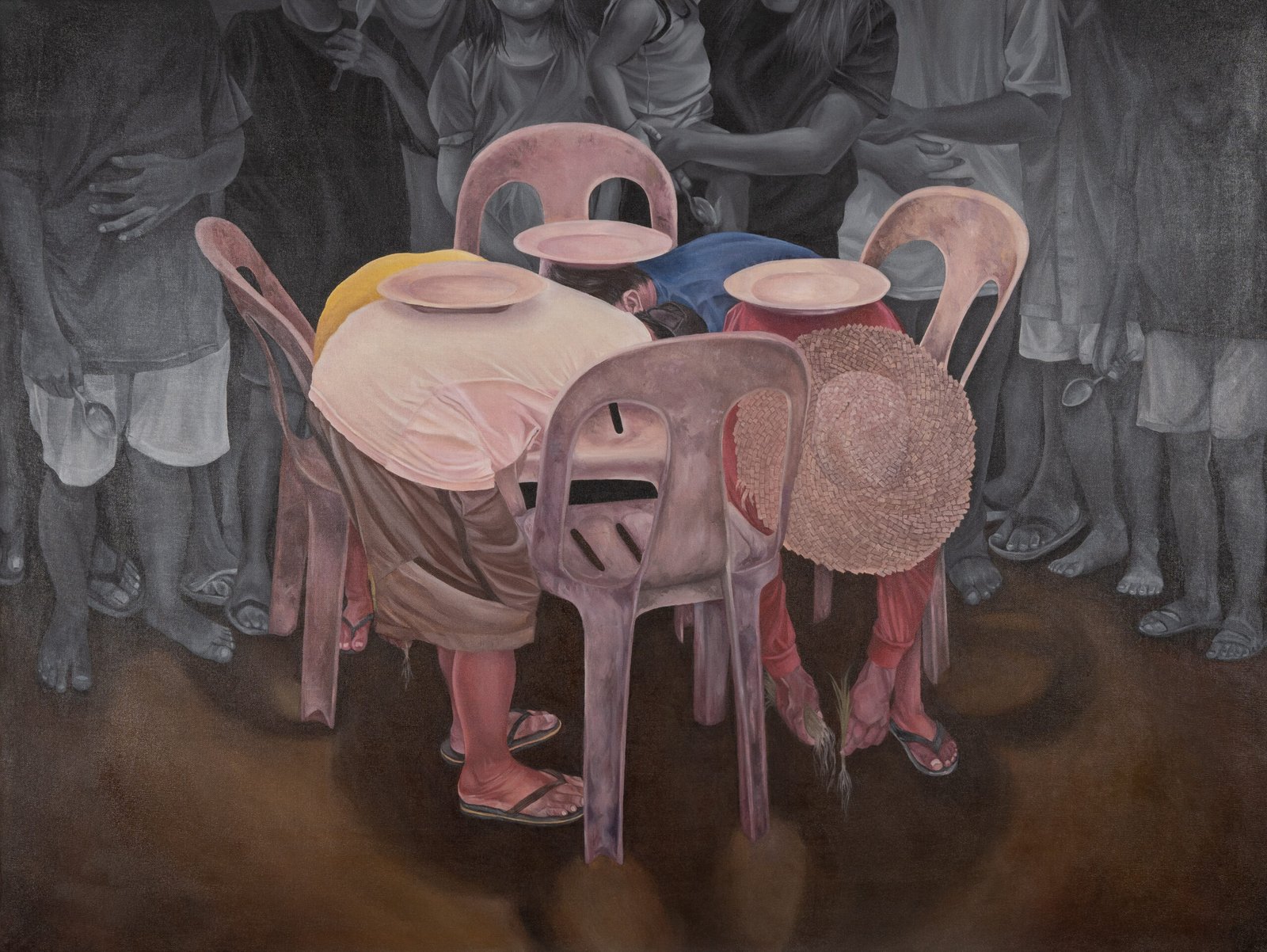

Was there a moment in the curation process that surprised you or shifted your perspective on the exhibit?
Palomar: We initially thought of organizing the pieces by periods, which seemed straightforward. But once we saw the artworks in the museum, it made us reconsider how they were arranged. Interacting with the artists also changed things. Some were hesitant to show their early works, which we had to respect. This flexibility helped us shape the exhibit, allowing it to look forward as well as back.
What lasting impression do you hope Sibol leaves on viewers regarding how they see Filipino art?
Palomar: Aside from representing the Metrobank Foundation’s legacy of supporting Philippine contemporary art, we hope Sibol shows that MADE is ready to keep growing. The 40 or so artworks on display demonstrate that the artists represented here are exploring new mediums and languages. I hope viewers will see that future competitions and awards will continue to nurture the growth of Filipino artists, just as MADE has done over the past 40 years.
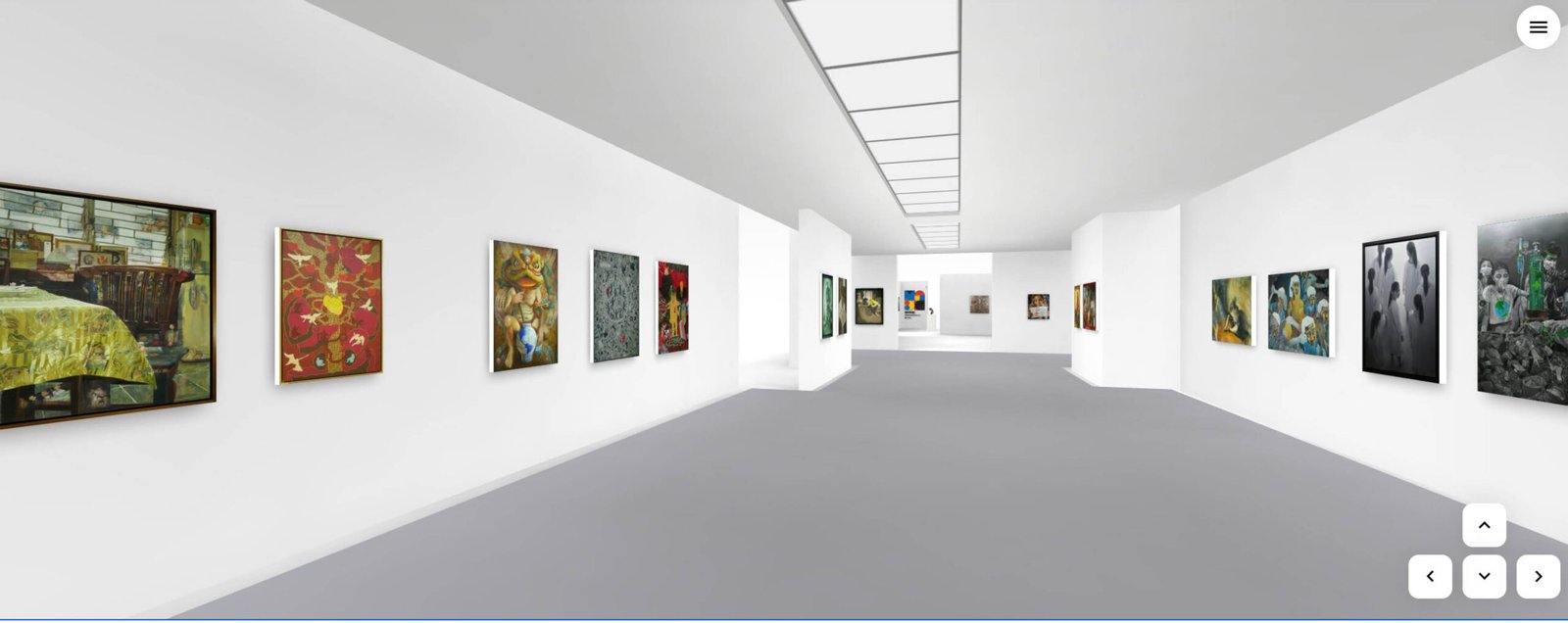

How do you think Sibol reflects the changing identity of the Philippines, both as a nation and through its evolving artistic voice?
Palomar: I’d say Sibol reflects the changing visions and practices of Filipino artists rather than a shift in identity. The artists know they are Filipino, and their work reflects that. What changes are the ways they express themselves.
For example, we see recurring themes of resilience and openness to change throughout the exhibition. One painting in the second section exemplifies Filipino resilience, while another, a diptych, demonstrates the openness to collaboration between two artists. While the methods evolve, our identity as a nation remains intact, and this collection is a true reflection of Philippine art. •
Sibol: MADE’s 40th Anniversary Exhibition is up from September 20 to October 19, 2024, 2F North C 3F South Galleries at the Metropolitan Museum of Manila.

